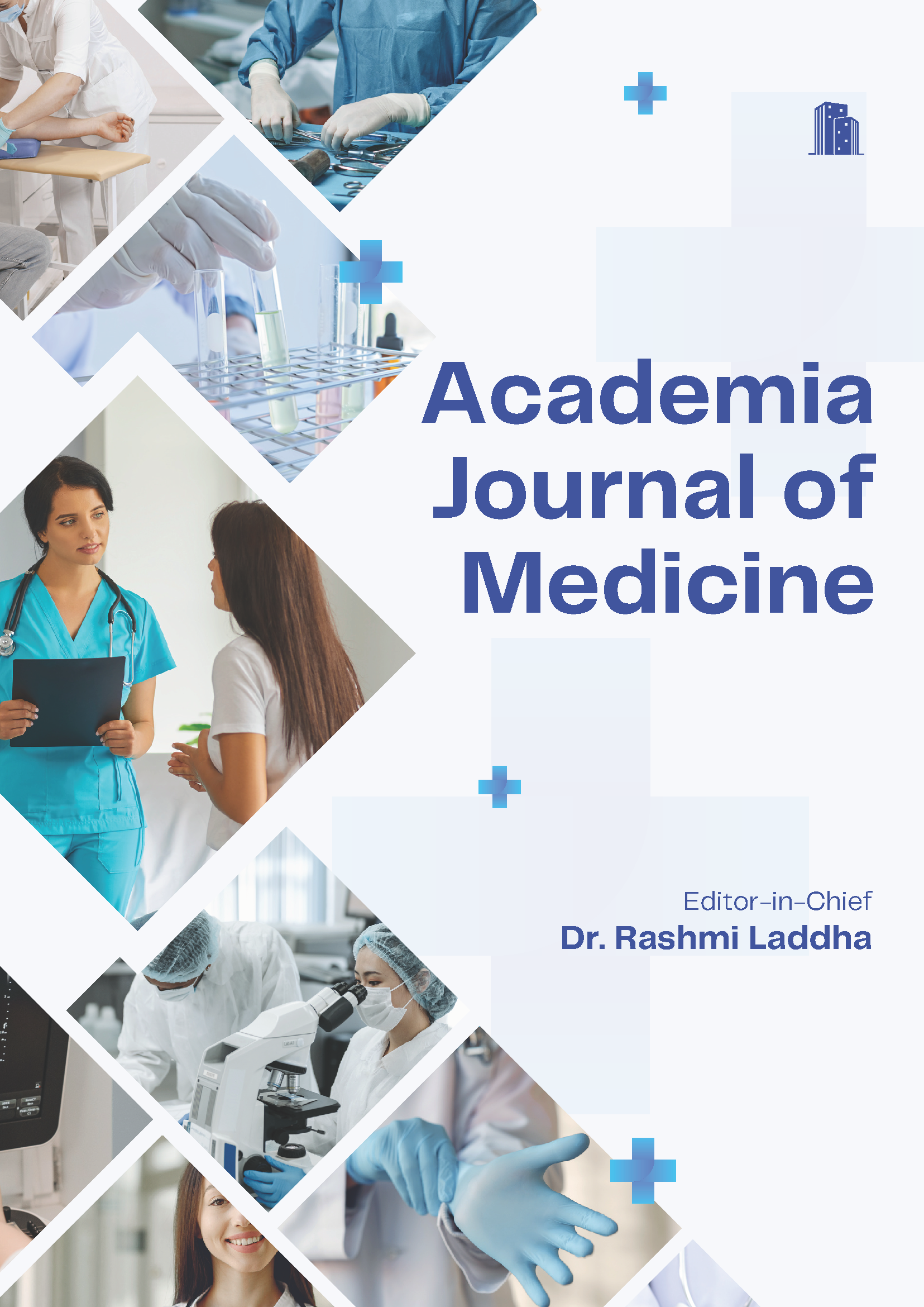The Outcome of Direct-Acting Antivirals in Treatment-Naïve Non-Cirrhotic, Chronic Hepatitis-C Infected Patients in a Tertiary Care Center
Keywords:
Antiviral therapy, Non-Cirrhotic, Chronic Hepatitis-CAbstract
Background: To determine the outcome of Direct-Acting Antivirals in treatment-naïve Non-Cirrhotic, Chronic Hepatitis-C infected patients in a tertiary care Centre. Subjects and Methods: Hepatitis C positive non cirrhotics patients were included in the study. Treatment was given according to HCV Genotype and HCV Viral Load. 12 weeks after completion of treatment with Direct-acting antivirals patient were assessed for the Sustained Virological Response (SVR) ie.;SVR12. Results: The (Mean±SD) age was found to be 43.92±13.51 years. There are 11(44%) male whereas 14(56%) female. Out of total subjects, 3(12%) had diabetes mellitus whereas 5(20%) reported hypertension. Genotype 3 was found to be most common (72%). The mean±SD after treatment A.L.T U./L, A.S.T U/.L and I.N.R observed was 13.95±4.90, 14.97±5.03 and 1.40±0.54 respectively. The mean±SD Total Bilirubin mg/dL, Albumin g/dL and Hb g/dl observed was 0.72±0.32, 3.99±0.57 and 11.49±1.46 respectively. In 23 (92%) subjects S.V.R was achieved whereas in 2(8%) cases it was not achieved. Conclusion:Oral D.A.A accomplished higher SVR12 rates and were very much endured in this cohort based study associated with patients diagnosed with Chronic Hepatitis-C.
Downloads
References
1. Polaris Observatory HCV Collaborators. Global prevalence and genotype distribution of hepatitis C virus infection in
2015: a modelling study. Lancet Gastroenterol Hepatol. 2017;2(3):161–176. Available from: https://doi.org/10.1016/ s2468-1253(16)30181-9.
2. Gower E, Estes C, Blach S, Razavi-Shearer K, Razavi H. Global epidemiology and genotype distribution of the hepatitis C virus infection. J Hepatol. 2014;61(1):45–57. Available from: https: //doi.org/10.1016/j.jhep.2014.07.027.
3. Stanaway JD, Flaxman AD, Naghavi M, Fitzmaurice C, Vos T, Abubakar I, et al. The global burden of viral hepatitis from 1990 to 2013: findings from the Global Burden of Disease Study 2013. Lancet. 2016;388(10049):1081–1088. Available from: https://doi.org/10.1016/s0140-6736(16)30579-7.
4. Franco RA, Galbraith JW, Overton ET, Saag MS. Direct acting antivirals and chronic hepatitis C: towards elimination. Hepatoma Res. 2018;4:74.
5. Narahari S, Juwle A, Basak S, Saranath D. Prevalence and geographic distribution of Hepatitis C Virus genotypes in Indian patient cohort. Infect Genet Evol. 2009;9(4):643–645. Available from: https://doi.org/10.1016/j.meegid.2009.04.001.
6. Garg G, Dixit VK, Shukla SK, Singh SK, Sachan S, Tiwari A, et al. Impact of Direct Acting Antiviral Drugs in Treatment Naïve HCV Cirrhosis on Fibrosis and Severity of Liver Disease: A Real Life Experience from a Tertiary Care Center of North India. J ClinExpHepatol. 2018;8(3):241–249. Available from: https://doi.org/10.1016/j.jceh.2017.11.011.
7. Puri P, Anand AC, Saraswat VA, Acharya SK, Dhiman RK, Aggarwal R. Consensus statement of HCV task force of the Indian National Association for Study of the Liver (INASL). Part I: Status report of HCV infection in India. J Clin Exp Hepatol. 2014;4(2):106–116. Available from: https://doi.org/ 10.1016/j.jceh.2014.05.006.
8. Gupta V, Kumar A, Sharma P, Arora A. Newer direct-acting antivirals for hepatitis C virus infection: Perspectives for India. Indian J Med Res. 2017;146(1):23–33. Available from: https: //doi.org/10.4103/ijmr.ijmr_679_15.
9. Van Der Meer AJ, Veldt BJ, Feld JJ, Wedemeyer H, Dufour JF, Lammert F, et al. Association between sustained virological response and all-cause mortality among patients with chronic hepatitis C and advanced hepatic fibrosis. JAMA. 2012;308(24):2584–93. Available from: https://doi.org/10. 1001/jama.2012.144878.
10. Yek C, Flor CDL, Marshall J, Zoellner C, Thompson G, Quirk L, et al. Effectiveness of direct-acting antiviral therapy for hepatitis C in difficult-to-treat patients in a safety-net health system: a retrospective cohort study. BMC Med. 2017;15(1):1– 8.
11. Itokawa N, Atsukawa M, Tsubota A, Ikegami T, Shimada N, Kato K, et al. Efficacy of directacting antiviral treatment in patients with compensated liver cirrhosis: A multicenter study. Hepatol Res. 2019;49(2):125–135. Available from: https://doi. org/10.1111/hepr.13256.
12. Ahmed M. Era of direct acting anti-viral agents for the treatment of hepatitis C. World J Hepatol. 2018;10(10):670–84. Available from: https://dx.doi.org/10.4254/wjh.v10.i10.670.
13. Das D, Pandya M. Recent advancement of direct-acting antiviral agents (DAAs) in hepatitis C therapy. Mini Rev Med Chem. 2018;18(7):584–596. Available from: https://doi.org/ 10.2174/1389557517666170913111930.
14. Chalikonda DM, Dhanekula RK, Miller A, Kistler CA, Javia
A, Ahmed M. Mo1406-Hepatitis C Treatment Failure with
Direct Acting Antiviral Therapy: Demographics and Clinical
Management. Gastroenterol. 2018;154(6):1196.
